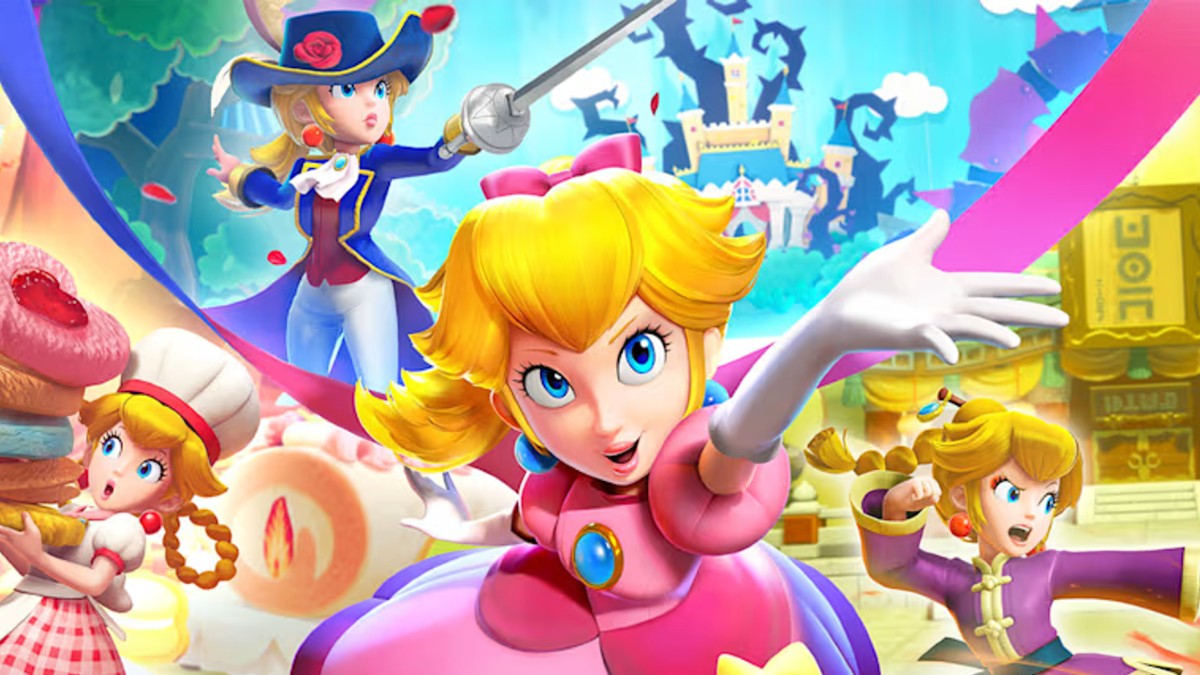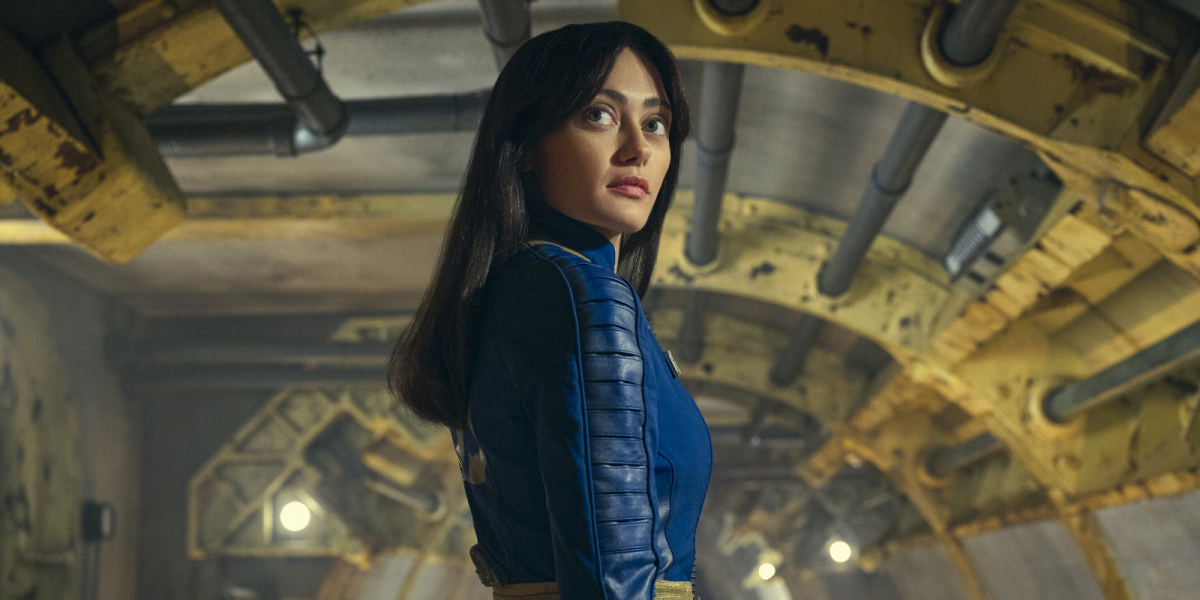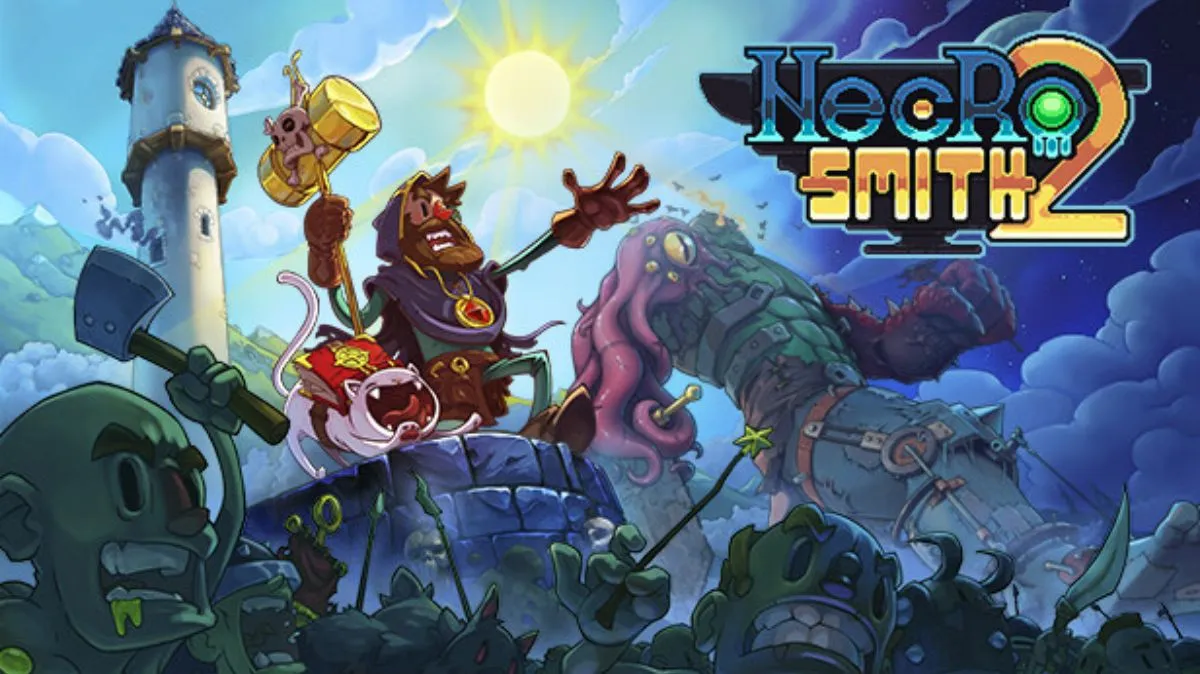
While the general consumer media and public have been heaping praise upon praise on Nintendo’s plucky Little Console That Could, quite a few “hardcore” gamers have been eyeing the Wii with trepidation. Though hyped as a game design revolution, thus far the Wii’s motion sensing control has done little other than lend itself to a new breed of minigame compilations, and more than a few members of the gaming community have labeled it a gimmicky fad – at best. The Xbox 360 is boasting games like Mass Effect and the Halo 3 juggernaut, and Metal Gear Solid 4 is looming around the corner for Sony’s beleaguered PS3. It seemed the Wii was in desperate need for its own, more conventional, AAA title if it were to hang on to its nebulous lead in this generation of the console wars.
Enter Shigeru Miyamoto, the godfather of modern gaming, and a mustachioed plumber that just happens to be the single most recognizable videogame icon in the world.
Super Mario Galaxy is – make no mistake – every inch the game it was promised to be from start to finish, and the game that Wii owners have been waiting for since the console launched a year ago. The premise should be quite familiar to anybody who’s played, say, virtually any of the main Mario games ever: Invited to the castle for a celebration by pink-clad Princess Peach, our hero has scarcely arrived before his longtime nemesis, Bowser, shows up to crash the party. With a fleet of airships and a mysterious UFO, Bowser kidnaps the princess (along with her entire castle) and heads off to make mischief.
Mario wakes up in the company of cutesy, little star-creatures called Lumas and a mysterious girl named Rosalina, who lets him know that he needs to retrieve a certain number of Power Stars before they can activate their Observatory starship and follow Bowser to rescue Peach, yada, yada, yada. It’s certainly formulaic and by no means an epic worthy of Homer, but it gets the job done and propels Mario into his latest adventure.
As Super Mario 64 had Peach’s Castle and Super Mario Sunshine had Delfino Plaza, Galaxy uses Rosalina’s Observatory as a hub area. There are six domes located across the Observatory, and each has four to six “galaxies” to explore. As the player gets more and more Power Stars, they have access to more and more galaxies. The final galaxy in each dome is an enemy base where Mario ends up confronting either Bowser or his archenemy’s son, Bowser Jr., and upon defeating the big bad, he gains access to the next dome and series of galaxies. It’s hardly a deviation from the Mario formula, but it’s a design choice that works quite well, and the old “if it ain’t broke” axiom is certainly true in this case.
It’s worth mentioning right off the bat – Galaxy looks great. Some have criticized the Wii’s lack of power evident in a disproportionate number of its other games, but Mario’s latest adventure is not one of them. Though as bright and cartoony as ever, Super Mario Galaxy demonstrates what a Wii game can and should look like with enough time and energy put into it. Its brilliant artistic design more than compensates for any weaknesses in the technical specs. Super Mario Galaxy is one of the most visually impressive games in a very long time.

Where other recent graphically intensive games fall short is another area where Galaxy shines: It plays as well (if not better) than it looks. The controls are slick and intuitive, carrying quite a few elements over from the other 3-D Mario titles, though the plumber has acquired a new move or two to his repertoire. Giving the Wii remote a little flick will spin Mario around rapidly, and this functions not only as his main attack to knock foes silly, but it also boosts him a bit mid-jump and activates a number of mid-level objects. The player can also use the remote’s pointer to acquire Star Bits floating through the level; these function as a sort of currency to unlock bonus stages, find hidden Power Stars or even purchase an item or two. Super Mario Galaxy feels like one of the first games to really make good use of the Wii’s motion sensors without it feeling like an afterthought.
Each stage has its own music that runs the gamut from peaceful to bubbly to bombastic. In what feels like a loving nod to fans of the past games in the franchise, some of the classic Mario tunes return, as well, in full orchestrated glory. There’s honestly a huge nostalgic buzz hearing the classic underground or swimming themes, and it’s just another thing that Super Mario Galaxy does superbly.
Arguably Galaxy‘s greatest strength, though, is its level design. Most of the galaxies are fairly large in size, with six or seven Power Stars to acquire, though there are some smaller one-shot levels with only a single Star as your goal. Whether big or little, however, they all share one thing in common: They’re exceptionally well crafted. The levels are as varied and diverse as they come, with your typical platformer fare (lava level, desert level, water level) set alongside giant honeycombs, bizarre toy factories, and some stages with a bit of everything sprinkled into the mix. There are even a few faux-2-D sidescrolling bits that fondly recall previous Mario games.
Each of the larger galaxies has three main Stars to seek out and another hidden one or two to find. There are also “Trickster Comets” that will occasionally randomly pass by one of the levels, adding another challenge to the mix. These comets add various challenges to the stages: Some send you on a hunt for a hundred purple coins scattered across the zone, some require you to complete one of the main Star courses under a certain time or race a shadowy double toward the goal. The white Daredevil Comets are particularly challenging: A Daredevil stage has you completing a stage you’ve already beaten (usually a boss fight), with only one point of life. If you get hit, you’re done and must try again. In general, the difficulty curve feels very well balanced with a spike here and there. It’s certainly challenging at times, though it never quite reached the point of controller-breaking frustration.
What Galaxy does with physics and gravity in particular deserves singular praise, and there are certain parts of the game that had me torn between head-scratching confusion and jaw-dropping admiration at the brilliance of the design. There’s just some primal satisfaction in jumping off one planetoid into deep space and having the gravity of another one nearby pull you in.

For all of its (many, many) strengths, Super Mario Galaxy is certainly not without its. Foremost in my mind would be issues with the game’s camera. Though half the time it works as fluidly and naturally as the rest of the game, the other half the camera position seems awkwardly placed in a fixed, nonadjustable position. Given that Mario can literally run in 360 degrees around most of the planets in the game, this can be headache inducing. Occasionally, you’ll end up pressing the controls to guide the hero one way while he runs off in what feels like a completely different direction. It can also sometimes be a bit disorienting and even induce a bit of motion sickness, and there were times I found myself having to pause for a bit to shake off a headache.
While the motion sensing is used perfectly and intuitively for the vast majority of the game, there are times when it feels like it was almost tacked on. Though some of its usage (like the spin maneuver, controlling sling pods and the blue Pull Stars) is wonderfully done, I couldn’t help but feel it seemed a bit unnecessary for the surfing and ball-rolling stages, and I kept thinking that it would have honestly been better to simply use the analog stick for those parts.
Galaxy is the most powerup-happy game in the franchise since Super Mario Bros. 3, and while the various abilities are all fun to use in their own way, I can’t help but feel that some of them were almost criminally underused or misused. The classic Fire Flower, for instance, is all but chiefly relegated to lighting unlit torches to open a door or something along those lines, and one of the single most entertaining powerups in the game – free-roaming flight – isn’t usable anywhere outside of the main Observatory hub (other than the mini-course where you unlock it). It’s certainly understandable from a design choice to not break the game, but it’s rather disappointing that the developers didn’t allow you to use it as a reward in levels once you’d collected every Power Star in the game.
In general, Super Mario Galaxy feels much less free than its predecessors, particularly the timeless Super Mario 64. Virtually every stage is completely linear depending on the Star course selected, and the game railroads you on the certain path you’ve selected from beginning to end. Some of the Star courses have secret pathways to acquire hidden Power Stars, but those are the exceptions rather than the rule. There’s very little free exploration in Galaxy, and part of me feels it’s an honest shame, especially given how wonderfully designed each galaxy is.
Of course, this isn’t necessarily a mark against the game. There’s nothing inherently bad about linearity; it’s a design choice more than anything. After all, the classic Mario 2-D sidescrollers were as linear as they came, and it does feel that in many ways, Galaxy draws just as much inspiration from those games as it does its more recent 3-D kin. Yes, the stages are linear, but they’re some of the best linear stages gaming has seen in a very long time.
It’s hard to sum up a game like Super Mario Galaxy. It’s certainly not as revolutionary as Super Mario 64, but then again, few games are. It’s an evolution of the genre more than a revolution, polished to a brilliant shine and full of some of the best gameplay and level design gaming has seen in ages. It’s not perfect by any means, but it’s damn well close, and is definitely the game Wii owners have been waiting for. I’m usually not one to recommend a game as a “must-own,” but anybody with a Wii should honestly get his hands on Super Mario Galaxy. It’s more than worth it.
Bottom Line: While suffering from occasional camera flaws and lacking the exploratory freedom of its legendary predecessor Super Mario 64, Super Mario Galaxy is a stellar addition to the Mario franchise and features some of the best platforming action we’ve seen in years. It looks and sounds great, plays even better, is decently challenging without being frustratingly so, and is neatly packaged and polished to a brilliant shine.
Recommendation: Buy it. If you don’t have a Wii, rent one. This is a true gaming gem.



